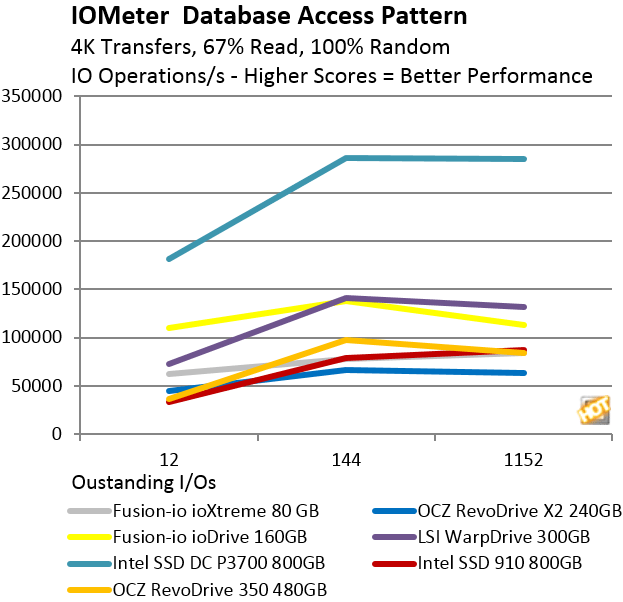Test Setup, IOMeter 1.1 RC
Our Test Methodologies: Under each test condition, the Solid State Drives tested here were installed as secondary volumes in our testbed, with a separate drive used for the OS and benchmark installations. Out testbed's motherboard was updated with the latest BIOS available as of press time and AHCI (or RAID) mode was enabled. The SSDs were secure erased prior to testing, and left blank without partitions for some tests, while others required them to be partitioned and formatted, as is the case with our ATTO, PCMark 7, and CrystalDiskMark benchmark tests. Windows firewall, automatic updates and screen savers were all disabled before testing. In all test runs, we rebooted the system, ensured all temp and prefetch data was purged, and waited several minutes for drive activity to settle and for the system to reach an idle state before invoking a test.
|
Motherboard - Video Card - Memory - Audio - Storage -
|
Hardware Used: Intel Core i7-4960X Asus P9X79 Deluxe (X79 Chipset, AHCI Enabled) NVIDIA GeForce GTX 770 16GB Corsair DDR3-1600 Integrated on board Corsair Force GT (OS Drive) Intel SSD DC P3700 (800GB) Intel SSD DC3700 (200GB) LSI WarpDrive (300GB) OCZ Z-Drive R4 OCZ RevoDrive 350 |
OS - Chipset Drivers - DirectX - Video Drivers - |
Relevant Software: Windows 8.1 Pro x64 Intel 9.4.0.1027, iRST 12.8.0.1016 DirectX 11 Intel HD 10.18.10.33 Benchmarks Used: IOMeter 1.1.0 RC HD Tune v5.50 ATTO v2.47 AS SSD CrystalDiskMark v3.0.3 x64 PCMark 7 SiSoftware Sandra 2014 |
|
As we've noted in previous SSD articles, though IOMeter is clearly a well-respected industry standard drive benchmark, we're not completely comfortable with it for testing SSDs. The fact of the matter is, though our actual results with IOMeter appear to scale properly, it is debatable whether or not certain access patterns, as they are presented to and measured on an SSD, actually provide a valid example of real-world performance for the average end user. That said, we do think IOMeter is a reliable gauge for relative available throughput within a given storage solution. In addition there are certain higher-end workloads you can place on a drive with IOMeter, that you can't with most other storage benchmark tools available currently.
In the following tables, we're showing two sets of access patterns; our custom Workstation pattern, with an 8K transfer size, 80% reads (20% writes) and 80% random (20% sequential) access and a 4K access pattern with a 4K transfer size, comprised of 67% reads (34% writes) and 100% random access.


The Intel SSD DC P3700 dominated all of the other drives we tested in the 100% random 4K access pattern, nearly doubling the performance of some of the drive. With 8K and some sequential transfers thrown into the mix, the DC P3700 still performed very well, but didn't quite lead the pack across the board. At the highest queue depth, however, it was the fastest overall.






